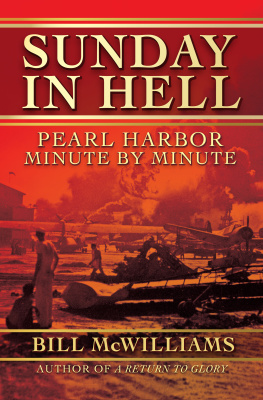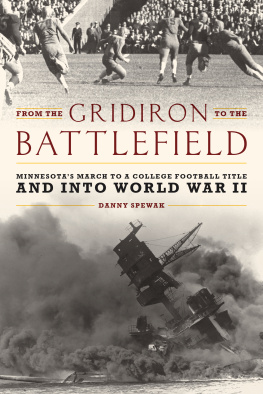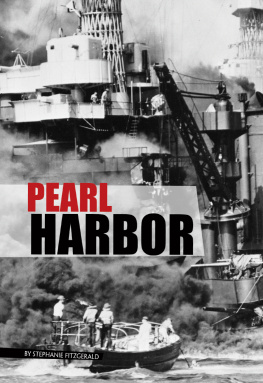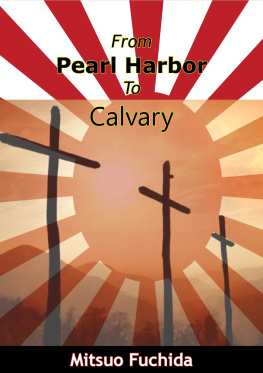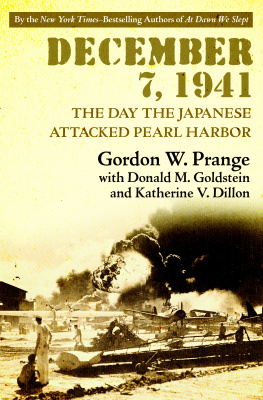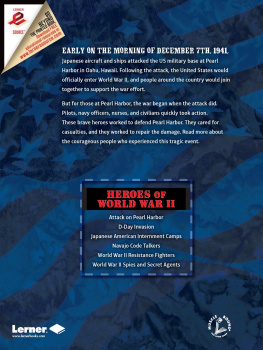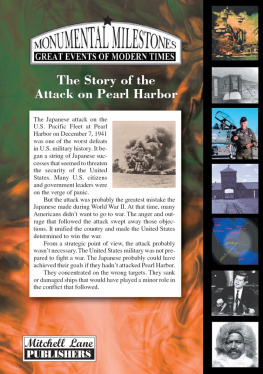CONTENTS
Guide

WHILE RESEARCHING THE PEARL HARBOR HISTORY, S UNDAY IN H ELL , I AGAIN LEARNED how history becomes a writers teacher and sometimes leads a historian in an unexpected, completely circular path, where surprises waitand another history can jump off one page in a newspaper or magazine clipping. As Bill OReilly said in narrating the television series Legends and Lies , News is the first draft of history.
In the first instance, in 1992, I began researching and writing history with a lengthy, seven-year, 1,144-page book centered on the United States Military Academy during the Korean War. The intense work led through the inside of West Points infamous 1951 cheating incident, the subsequent destruction that year of the armys nationally ranked varsity football team, and its astonishing rebuilding and A Return to Glory in the 1953 season. That was the year the Cadets Army team returned to the national rankings, at no. 14, after the last whistle in the seasons last game signaled their victory over Navy.
The cheating incident literally became a national scandal, followed by an inspired 1953 team filled with sophomore sensations and sterling team leaders, the Academys 1954 seniors, both classes more than eager to lift Armysand the Corps of Cadetsflagging gridiron spirits.
But it was in the lead-up to that inspiring football season, through research, in an article from an Army magazine mailed to me by McPherson Conner, class of 1952, and memories of my first summer at West Point, that I stumbled upon an event half a world away, the final battle for a Korean War outpost named Pork Chop Hill, a bitter, bloody five-day battle few had heard of or remembered. The battle had been obscured primarily because famed military historian SLA Marshall published a book titled Pork Chop Hill , a history of the 1618 April 1953 battle, on which a 1959 movie by the same name had been based, starring Gregory Peck.
The bloody 611 July 1953 battle for the outpost ended sixteen days prior to the signing of the Korean War truce, was extremely controversial in the minds of its survivors and many historians, and cost 243 American lives, while 916 more were wounded. Among those killed in action were two men in the class of 1952 who had been in the 4th New Cadet Company, the company I was in as a plebe (freshman) my first summer at West Point. The two first classmen (seniors) graduated the following spring. (Their classmate McPherson Conner had fought in the July battle too and was grievously wounded, ending his army career.)
The two men killed in action were Lieutenants Richard Thomas Shea Jr., the 4th New Cadet Company commander the summer of 1951, Armys record-setting track team captain, a World War II army enlistee, a gifted artist and cartoonist as a cadet, married, and his wife was pregnant with a son he never saw; and Richard George Inman, the son of the Vincennes, Indiana, High School football coach, a walk-on to the Army football team, and who struggled long and hard to make the varsity until the cheating incident gave him his chance to do what he always wanted to dowin the Army lettermens Major A in football. Dick Inman was a high hurdler on the Army track team with Dick Shea in the April 1952 Penn Relays, where the Army team captain won the two-mile championship the third year in a row, and Dick Inmans high-hurdle shuttle relay team won the college division championship. Dick Inman was also an intense idealist and a serious poet who had won second place in a nationwide university and college poetry contest. Whats more, when he was killed in action the night of 67 July 1953, back home in Indiana, his wife of four months was helping him write his first book, and he had already been in contact with Wernher von Braun, by letter, intent on entering the armys burgeoning rocket and space program on returning from the Korean War.
From that little-known, bitter July battle, the story of these two marvelous young men, and the gentle, but most welcome push by McPherson Conner, came my second major history, On Hallowed Ground: The Last Battle for Pork Chop Hill .
And now, Pearl Harbor has done the same for researchers and university and college officials who have repeatedly helped this author uncover far more facts about another inspiring story of football and war. Like the story of the July 1953 battle for Pork Chop Hill, the inspiration for this book was found scattered and almost buried in newspaper clippings; in San Francisco, Honolulu, Hawaii University, and state archives; in Willamette University and Oregon state archives; in San Jose State College archives; in a brief, twelve-minute glimpse in a 2000 ESPN broadcast; and in a brief, narrated video and 2006 DVD about the Willamette team.
No more. A quotation by the famed Alaska-centered historian Steven C. Levi, sent with emails from Gina Bardi, the reference librarian at the San Francisco Maritime National Historical Park Research Center, yields one important perspective, but not the only view. History... is not a re-creation of the past. Its an assessment of the past based on documents provided by people in archives and museums who will answer your letters. The list of those who would answer writers queries is today much longer than letters only. Sources now include phone, emails, social media, interviews, and personal and online visits to libraries and museums using powerful search engines, just to name a few.
The existence of this long-ago story was first written about by reporters in brief news pieces in San Francisco; Salem, Oregon; San Jose, California; Seattle and Puget Sound newspapers in Washington State; and Honolulu newspapers leading up to November 27, 1941, when the Willamette Bearcats and San Jose State Spartans left San Francisco, bound for Honolulu, on the famed Great White Matson Liner, SS Lurline , to play a series of round-robin charity football games, beginning with Willamettes December 6 Shrine Bowl game against the University of Hawaii Rainbows for the benefit of the Shriners Hospital in Honolulu. Then would come San Jose State and Hawaii on the 13th, to benefit the Honolulu police, and finally the two stateside teams would play each other at Honolulu Stadium on December 16 to help defray the costs of the trip to Hawaii.
The story resurfaced in the period after the Japanese December 7 attack on Pearl Harbor after the first evacuation convoy from Hawaii arrived in San Francisco on Christmas Day 1941. Crew members on the SS President Coolidge spoke to a number of reporters of their experiences on the last leg of their journey from Manila, Philippines, to and from Honolulu, and finally home. A lovely lady in the San Francisco Library, Marti Goddard, sent me a large collection of newspaper clippings about the ships arrival that Christmas Day when I was early in the lengthy research for the Pearl Harbor history.
Among all the reporting of the unnamed ships arrival were references to the two football teams on board. The ships name was deliberately withheld from news stories on arrival in San Francisco due to tight security measures involving ship movements imposed immediately after the attack on Pearl Harbor. Then began the far more intense research, through all means at my disposal to begin the long-distance effort, in university libraries, archives, and athletic departments at Willamette, San Jose State, and the University of Hawaii, the Oregon State University Archives, and then alumni associations, to expand and deepen my researchto become a book that would hopefully tell the whole story.
This has been an incredible, educational journey in time, distance, and never-ending curiosity. Without all these wonderful people, whose names follow, I could never have completed the journey. First and foremost must come six close family membersmy beautiful wife of more than sixty years, Veronica Eileen (Ronnie), whom our family lost to Alzheimers disease on All Saints Day, November 1, 2015, and my beautiful new wife, Anna Marie Bates, who agreed to marry me on October 15, 2016, in Las Vegas, Nevada, and granted me the privilege of sharing the rest of our lives together. Ronnies and my three children, Kathleen Mendenhall, Mary Ann Villet, our son Bill IV (and their families), and a marvelous Christian lady, Mary F. Smith, who is now a true member of our family and equally important in our lives, plus our agent, Stuart M. Miller, and his wife, Charlotte.


